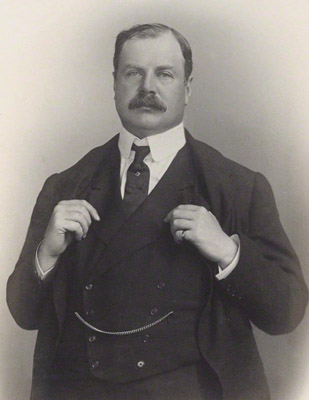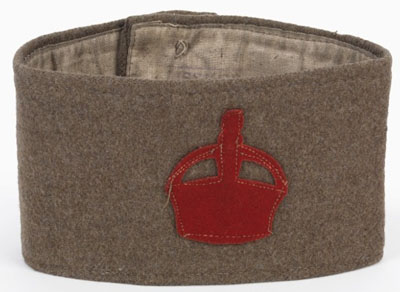The Derby Scheme
In August 1914, the recruitment offices were inundated with men eager to sign up to service and ensure they would see action; after all, it would all be over by Christmas!
In September the ‘Pals’ battalion concept had produced a second serge of recruitment. In spring 1915 enlistments had averaged 100,000 men per month, but while this recruitment rate was required, it could not be sustained and the flow of volunteer recruits was dwindling. In May 1915 the upper age limit was raised from 38 to 40 but it soon became clear that voluntary recruitment was not going to provide the numbers of men required.
On 15th July 1915, the government passed the ‘National Registration Act’ in order to discover how many men between the ages of 15 and 65 were engaged in what trade. All men within this age range who were not already in the military service were required to register, providing details of their trade and employment. The results of this census became available by mid-September 1915. Nearly 5 million men of military age had registered, of which 1.6m were in protected professions, known as ‘starred’ jobs. This left a list of nearly 3.4 million men eligible and ‘available’ for military service.
The government was still reluctant to introduce conscription and turned once again to Lord Derby to come up a half-way house scheme.
 Born in 1865, Edward George Villiers Stanley became the 17th Lord Derby in 1908. He played a major part in raising volunteers in what became known as the ‘Pals’ battalions, especially for the King's (Liverpool) Regiment where 1,500 Liverpudlians had joined a new battalion. Speaking to these men Lord Derby said: "This should be a battalion of pals, a battalion in which friends from the same office will fight shoulder to shoulder for the honour of Britain and the credit of Liverpool." Within the next few days, three more battalions were raised in Liverpool, forming the 17th, 18th, 19th and 20th Battalions of the King's Regiment (Liverpool).
Born in 1865, Edward George Villiers Stanley became the 17th Lord Derby in 1908. He played a major part in raising volunteers in what became known as the ‘Pals’ battalions, especially for the King's (Liverpool) Regiment where 1,500 Liverpudlians had joined a new battalion. Speaking to these men Lord Derby said: "This should be a battalion of pals, a battalion in which friends from the same office will fight shoulder to shoulder for the honour of Britain and the credit of Liverpool." Within the next few days, three more battalions were raised in Liverpool, forming the 17th, 18th, 19th and 20th Battalions of the King's Regiment (Liverpool).
Lord Derby was appointed Director-General of Recruiting on 11th October 1915 to develop the next phase of recruitment. Just five days later, he introduced a new recruitment programme that was generally called the Derby Scheme, although its official title was the Group Scheme.
The ‘Group’ or ‘Derby’ Scheme
The War Office notified the public that voluntary enlistment would soon cease and that the last day of registration would be 15th December 1915. Under the new scheme, men aged 18 to 40 were informed that they could ‘attest’ for immediate or a deferred service where they report if and when required at a later date. The commitment was also made the pledge that single men would be called up before married men.
Men who ‘attested’ under the Derby Scheme, who were accepted for service but chose to defer it were classified as being in ‘Class A’. Those who agreed to immediate service were ‘Class B’.
‘Class A’ men were paid a day's army pay and given a grey armband with a red crown to be worn as a sign that they had so volunteered, removing the stigma often shown to those who hadn’t already volunteered. They then returned to their homes and jobs until they were called up, many with the expectation that they may not see service. The war office officially entered these men into ‘Section B Army Reserve’.

However, the Scheme was largely regarded as a failure. 215,000 men enlisted for immediate service and another 2,185,000 attested for deferred enlistment. This equated to approximately 38% of single men and 54% of marrieds who were not in ‘starred’ jobs and therefore available for service. This presented two issues, firstly that numbers that had enlisted for immediate service was well below what was required and therefore the call up groups was far more aggressive than initially planned and secondly, forced a move towards full conscription. The group call ups were implemented and the voluntary attestation reopened on 10 January 1916, to buy some time while the government reconsidered its options.
How the group scheme worked
The men who attested under the Derby Scheme were firstly classified into married and single status and then into 23 groups according to their age.
Call up under the Derby Scheme began: Groups 2 to 5 were called up in the last two weeks of January 1916, and Groups 6 to 13 in February. The last single groups other than the 18 year-olds were called up in March. As the attestation numbers were less than anticipated, coupled with the expected demands of summer offensives, the call ups were far more aggressive than anticipated. This last batch were called up in parallel to the first men to be called up via conscription under the Military Service Act. Attestation under the scheme ceased on 1 March 1916.
One major difference in the group scheme differed from previous enlistment was where they served. Up to this point the enlistment was typically carried out by Sergeants from the local regiment so unless a specific unit was requested, Artillery for example, you would typically be posted to your local infantry regiment. Under the group scheme and later conscription, this was not necessarily the case. A number of regiments and battalion groups had been established by this point and were sustaining heavy losses on the front therefore new entrants were needed as replacements, not formation of new units. Group Scheme recruits rarely had a say in the regiment to which they were assigned.
Groups
The groups and dates below apply to those who had deferred their service. The Group numbers are not the same as the Mobilisation dates industrial/classification numbers often seen in the man's service record.
Many men were called up on dates later than that on which their Group was first mobilised:
- Those men who attested later than the Group mobilisation were given a month's notice of call-up.
- Many also chose to appeal for even later call-up: their cases were referred to local tribunals.
The proclamation date was when they were notified and expected to report on the Mobilisation date.
|
Marital Status |
Year of birth |
Group |
Proclamation |
Mobilisation |
|
Single |
1897 |
1 |
25 Feb 1916 |
28 Mar 1916 |
|
1896 |
2 |
20 Dec 1915 |
20 Jan 1916 |
|
|
1895 |
3 |
20 Dec 1915 |
20 Jan 1916 |
|
|
1894 |
4 |
20 Dec 1915 |
20 Jan 1916 |
|
|
1893 |
5 |
20 Dec 1915 |
20 Jan 1916 |
|
|
1892 |
6 |
8 Jan 1916 |
8 Feb 1916 |
|
|
1891 |
7 |
8 Jan 1916 |
8 Feb 1916 |
|
|
1890 |
8 |
8 Jan 1916 |
8 Feb 1916 |
|
|
1889 |
9 |
8 Jan 1916 |
8 Feb 1916 |
|
|
1888 |
10 |
30 Jan 1916 |
29 Feb 1916 |
|
|
1887 |
11 |
30 Jan 1916 |
29 Feb 1916 |
|
|
1886 |
12 |
30 Jan 1916 |
29 Feb 1916 |
|
|
1885 |
13 |
30 Jan 1916 |
29 Feb 1916 |
|
|
1884 |
14 |
16 Feb 1916 |
18 Mar 1916 |
|
|
1883 |
15 |
16 Feb 1916 |
18 Mar 1916 |
|
|
1882 |
16 |
16 Feb 1916 |
18 Mar 1916 |
|
|
1881 |
17 |
16 Feb 1916 |
18 Mar 1916 |
|
|
1880 |
18 |
16 Feb 1916 |
18 Mar 1916 |
|
|
1879 |
19 |
16 Feb 1916 |
18 Mar 1916 |
|
|
1878 |
20 |
16 Feb 1916 |
18 Mar 1916 |
|
|
1877 |
21 |
16 Feb 1916 |
18 Mar 1916 |
|
|
1876 |
22 |
16 Feb 1916 |
18 Mar 1916 |
|
|
1875 |
23 |
16 Feb 1916 |
18 Mar 1916 |
|
|
Married |
1897 |
24 |
13 May 1916 |
13 Jun 1916 |
|
1896 |
25 |
7 Mar 1916 |
7 Apr 1916 |
|
|
1895 |
26 |
7 Mar 1916 |
7 Apr 1916 |
|
|
1894 |
27 |
7 Mar 1916 |
7 Apr 1916 |
|
|
1893 |
28 |
7 Mar 1916 |
7 Apr 1916 |
|
|
1892 |
29 |
7 Mar 1916 |
7 Apr 1916 |
|
|
1891 |
30 |
7 Mar 1916 |
7 Apr 1916 |
|
|
1890 |
31 |
7 Mar 1916 |
7 Apr 1916 |
|
|
1889 |
32 |
7 Mar 1916 |
7 Apr 1916 |
|
|
1888 |
33 |
27 Apr 1916 |
29 May 1916 |
|
|
1887 |
34 |
27 Apr 1916 |
29 May 1916 |
|
|
1886 |
35 |
27 Apr 1916 |
29 May 1916 |
|
|
1885 |
36 |
27 Apr 1916 |
29 May 1916 |
|
|
1884 |
37 |
27 Apr 1916 |
29 May 1916 |
|
|
1883 |
38 |
27 Apr 1916 |
29 May 1916 |
|
|
1882 |
39 |
27 Apr 1916 |
29 May 1916 |
|
|
1881 |
40 |
27 Apr 1916 |
29 May 1916 |
|
|
1880 |
41 |
27 Apr 1916 |
29 May 1916 |
|
|
1879 |
42 |
13 May 1916 |
13 Jun 1916 |
|
|
1878 |
43 |
13 May 1916 |
13 Jun 1916 |
|
|
1877 |
44 |
13 May 1916 |
13 Jun 1916 |
|
|
1876 |
45 |
13 May 1916 |
13 Jun 1916 |
|
|
1875 |
46 |
13 May 1916 |
13 Jun 1916 |
Table 1 - Group scheme based on marital status, year of birth to show proclamation and mobilisation dates.
Extension to the scheme
The scheme was later extended to capture potential recruits who we not yet 18. On 6th September 1916, the government started posting notices announcing the formation of a new ‘Group B’ that would be open for voluntary attestation of those born in 1899, with the assurance that they would not be called up for service until they reached 18. At the same time, all men in ‘Group A’ and those in ‘Class A’ and who were born in 1898 were informed that they would be required to serve from the age of 18 years and 7 months (previously 18 and 8 months). This category of man began to be mobilised from 7 October 1916.
